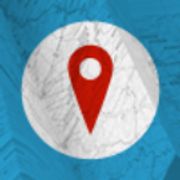
Seismic refraction is one of several techniques that geoscientists rely on to learn more about the quality and depth of bedrock. This intricate method relies on seismic waves to make determinations about the layers of rock and soil underground. Here’s what you should know about this practice.
What Is Seismic Refraction?
Geoscientists typically use seismic refraction to perform geophysical surveys. The process involves immersing the subsurface with seismic waves using tools like a seismograph and geophones. The waveforms that result are then recorded and interpreted to reveal more information about the depth and velocity of the bedrock’s layers.
More specifically, refraction measures the amount of time it takes for the sound waves to travel through and refract from the soil or rock layers of the subsurface. This provides practitioners with a comprehensive characterization of the bedrock.

It’s usually limited to mapping depths no more than 100 feet. In cases where there’s a material of a higher velocity present on top of soil or rock, such as hard clay, another technique such as seismic reflection might be deployed instead.
What Are the Benefits?
One of the greatest advantages is that it’s a versatile technique. It’s useful across a spectrum of applications, from mining to geotechnical engineering. The results are sharply accurate, which is important because mapping bedrock is usually necessary to identify potential fault zones, map water tables, and establish geologic boundaries.
During analysis, geoscientists can even apply different filtering processes and techniques to better understand the data derived during surveying. Professionals favor refraction because it allows them to map multiple layers of the bedrock.
Geoscientists can rely on GeoTek Alaska in Anchorage for their geophysical service needs. Serving the community since 2002, they offer seismic refraction, well monitoring, and auger drilling, among other functions. Visit the website to learn more about how they can facilitate your project needs, or call (907) 569-5900 to speak with a representative.
About the Business
(6 reviews)
Have a question? Ask the experts!
Send your question

